Tuesday, October 13, 2009
Elaine Miller-Karas -- Trauma, Healing & Serendipity in the Sichuan Province
Q – You are the co-founder of the Trauma Resource Institute. Tell us a little about your work with the Institute.
Elaine: The Trauma Resource Institute was established in December of 2006. Since our inception, we have taught and utilized our training models, The Trauma Resiliency Model, The Veterans Resiliency Model and the Community Resiliency Model worldwide. The models evolved in southern Thailand in January 2005 while treating survivors of the tsunami. Our trainings are now being co-sponsored by the World Health Organization in an on-going earthquake response program in Sichuan Province. This project has thus far provided training to more than 500 doctors, nurses, counselors, and teachers who work with survivors of the devastating earthquake of May 12, 2008. In the United States, our training model has been used with survivors and first-responders of Hurricanes Katrina and Rita. In Louisiana, a staff of 200 was trained at a nationally based social service agency in this trauma stabilization model. It was used in Rwanda, Africa to train counselors working with genocide survivors and in Kenya, Africa with prison inmates, counselors, and children in orphanages. Project evaluations have indicated positive effects in all settings and have been published in peer-review journals.
The Veterans Resiliency Model (VRM) is a biologically based intervention to treat combat zone trauma. We have had projects with the VA in LA and have recently presented in the Women in the Military Conference at Arlington Cemetary in Wash. DC. TRI has two studies being proposed to the United States Department of Defense to conduct further research on the efficacy of VRM.
In 2007, TRM skills were taught to the disaster mental health workers for the County of San Bernardino, California, Department of Behavioral Health (DBH). There were nine original trainees who represented different areas within DBH. After the initial training, the original nine began utilizing their TRM skills with great success and there was heightened interest in providing more trainings as co-workers began observing the effectiveness of TRM within Juvenile Hall, outpatient triage, children’s crisis response and in the shelters during the fires of 2007. Members of the original nine who had been trained in TRM expressed interest in training the entire DBH staff in TRM skills. TRI’s mission is to expand capacity at the local level and a proposal was made by the Trauma Resource Institute to DBH to create a two-phase project to “Train the Trainers.” The trainers would become TRM instructors and would be drawn from highly qualified clinicians within DBH so that there would be an infrastructure to train all of DBH staff.The DBH TRM Train the Trainer program in two phases was approved and began with 12 prospective teachers and 15 facilitators mid-year of 2008. This has been an exciting project for me as I worked at the county hospital in San Bernardino for many years. I am deeply committed to the underserved in this community and our trainings have reached people there in ways I never could have imagined.
Q – In your story, Trauma, Healing and Serendipity in the Sichuan Province, China, you work with the earthquake survivors using the Trauma Resiliency Model (TRM). How does this model differ from traditional methods of counseling?
Elaine: The human body, regardless of culture, ethnicity, and other qualities that distinguish us around the world, is neurologically programmed the same way when responding to threat and fear. The ways that the signs and symptoms of stress are interpreted can be very different across ethnic groups and cultures but the actual physiological manifestations of responses to fear are the same around the world. Any stressful or traumatic event generates a cascade of physiological, cognitive, behavioral and emotional responses. The body is programmed to fight or flee from threatening situations. These are automatic survival strategies that happen without conscious thought. When a person cannot successfully fight or cannot successfully flee, the energy that was automatically mobilized for survival remains locked in the body and can lead to an array of trauma symptoms, both psychological, cognitive and physical. These symptoms can remain intractable or can come and go over many years and can result in dramatic decreases in human potential.
Our training models present an overview of the core concepts of the biology of threat and fear and teaches the 6 skills of TRM, a stabilization model which helps children and adults re-gain access to the body’s own instinctive ability to rebound from overwhelming experiences. Our interventions are grounded in the tenet that trauma symptoms are the result of instinctual survival responses that have been thwarted or blocked. The consequence of these thwarted responses is a highly aroused internal state that, if left untreated, can lead to dysregulation of the nervous system and corresponding physical, emotional, behavioral, and cognitive symptoms.
The mechanism of our models of intervention, rather than being a “psychological” approach, is an approach that facilitates the restoration of resilience and homeostasis through self-regulation. The biologically-based focus makes it compatible across ethnic groups and cultures and with communally-oriented populations that are not psychologically or insight oriented.
Most psychological interventions address the emotional, psychological and cognitive challenges that clients have and intervene through models that help clients identify emotions, have greater insight about their interpersonal and familial challenges or how to create new more adaptive cognitive structures. Although we believe those models may be helpful, they may not lead to nervous system regulation and relieve symptoms of anxiety or depression. We believe that biological models like TRM, VRM and CRM, can be integrated into other models to enhance healing. We have learned that some of the more intractable problems of people cannot be “talked away.” Although, talking may be helpful, it is sensing that helps change the nervous system leading to balancemind and more integrative thinking and balanced emotional responses.
Q –The survivors of the massive earthquake in the Sichuan Province seemed to readily accept learning and practicing TRM’s “grounding” skill. Please explain what ‘grounding’ is and tell why you think the Chinese people were so open to it.
Elaine: Practicing the skill of grounding on a regular basis is one way to reestablish balance within the nervous system. . Grounding can bring you back into your comfort zone and it is an essential component of feeling connected to the earth, yourself and others. During the earthquake, people were literally knocked of their feet and their sense of safety with the earth was damaged. Grounding exercises which simply brings the persons attention to how the earth, chair, floor, sofa are supporting one’s body and then bring the client’s attention to the sensation of being grounded, helped re-establish safety within the body in relationship to the earth. A person experiences the change from the inside out. All around the world wherever we bring our model, whether in Asia, Africa, the United States react in similar ways when they re-establish their sense of safety with their body in relationship to the earth. It is actually very simple to teach and we have even seen children teaching their parents after they learn this simple skill. When people experience such trauma, they are looking for ways to come back to themselves….and simple grounding can be a way to begin to start to feel safer once again. We are all hardwired the same way…..our paradigms may be different in terms of causation but our sensations are the same.
Q - What was the most difficult part for you personally of working in the earthquakes aftermath? What was the most rewarding part?
Elaine: The most difficult part was the enormity of the loss and suffering and especially the loss of the children. In China, many people have followed the one child per family rule that was established by the Chinese government. As a result, when their child died the parents lost their present and their future. As is true in all cultures I have observed, children are hope for the present and the future. In my story, I talk about the Bichuan Middle School----seeing the school in rumble was representative of all the loss that China had endured in the earthquake and seeing the response of our young translators and the enormity of their grief was difficult.
The most rewarding part is seeing the change that our model can bring to people suffering in such a short period of time. It was very gratifying to see the health care providers apply the model to their care of people and be excited to see us come back and ask great questions about integrating the biological based models into their practices. Also, we have been asked to think about future sustainability models of trainings when we return to Beiching in January. The resilience of the Chinese people, their kindness and their generosity to us was also very rewarding.
Q – Have you written other stories /article besides, Trauma, Healing and Serendipity in the Sichuan Province, China? Do you have plans for more writing in the future?
Elaine: Yes, I have written other stories about my journeys. My business partner and I have written to workbooks to use with our trainings and we will publish those next year.
What is next for Elaine Miller-Karas?
Elaine: I will continue to work on the training models. I may be going to Jordan to train the Jordanian Civil Defense Ministry in December. Also, we are working on two big projects in the US, one in San Bernardino County and the other in Maine that has great promise to bring biological interventions to larger communities, especially in underserved areas. The military work is one we are very committed to and we are training more trainers in our model who can also do more of the training. I also am trying to spend more time with my husband. Starting the nonprofit has been a wild ride and I don’t want to lose sight of what is also important to me in my personal life.
Elaine: The Trauma Resource Institute was established in December of 2006. Since our inception, we have taught and utilized our training models, The Trauma Resiliency Model, The Veterans Resiliency Model and the Community Resiliency Model worldwide. The models evolved in southern Thailand in January 2005 while treating survivors of the tsunami. Our trainings are now being co-sponsored by the World Health Organization in an on-going earthquake response program in Sichuan Province. This project has thus far provided training to more than 500 doctors, nurses, counselors, and teachers who work with survivors of the devastating earthquake of May 12, 2008. In the United States, our training model has been used with survivors and first-responders of Hurricanes Katrina and Rita. In Louisiana, a staff of 200 was trained at a nationally based social service agency in this trauma stabilization model. It was used in Rwanda, Africa to train counselors working with genocide survivors and in Kenya, Africa with prison inmates, counselors, and children in orphanages. Project evaluations have indicated positive effects in all settings and have been published in peer-review journals.
The Veterans Resiliency Model (VRM) is a biologically based intervention to treat combat zone trauma. We have had projects with the VA in LA and have recently presented in the Women in the Military Conference at Arlington Cemetary in Wash. DC. TRI has two studies being proposed to the United States Department of Defense to conduct further research on the efficacy of VRM.
In 2007, TRM skills were taught to the disaster mental health workers for the County of San Bernardino, California, Department of Behavioral Health (DBH). There were nine original trainees who represented different areas within DBH. After the initial training, the original nine began utilizing their TRM skills with great success and there was heightened interest in providing more trainings as co-workers began observing the effectiveness of TRM within Juvenile Hall, outpatient triage, children’s crisis response and in the shelters during the fires of 2007. Members of the original nine who had been trained in TRM expressed interest in training the entire DBH staff in TRM skills. TRI’s mission is to expand capacity at the local level and a proposal was made by the Trauma Resource Institute to DBH to create a two-phase project to “Train the Trainers.” The trainers would become TRM instructors and would be drawn from highly qualified clinicians within DBH so that there would be an infrastructure to train all of DBH staff.The DBH TRM Train the Trainer program in two phases was approved and began with 12 prospective teachers and 15 facilitators mid-year of 2008. This has been an exciting project for me as I worked at the county hospital in San Bernardino for many years. I am deeply committed to the underserved in this community and our trainings have reached people there in ways I never could have imagined.
Q – In your story, Trauma, Healing and Serendipity in the Sichuan Province, China, you work with the earthquake survivors using the Trauma Resiliency Model (TRM). How does this model differ from traditional methods of counseling?
Elaine: The human body, regardless of culture, ethnicity, and other qualities that distinguish us around the world, is neurologically programmed the same way when responding to threat and fear. The ways that the signs and symptoms of stress are interpreted can be very different across ethnic groups and cultures but the actual physiological manifestations of responses to fear are the same around the world. Any stressful or traumatic event generates a cascade of physiological, cognitive, behavioral and emotional responses. The body is programmed to fight or flee from threatening situations. These are automatic survival strategies that happen without conscious thought. When a person cannot successfully fight or cannot successfully flee, the energy that was automatically mobilized for survival remains locked in the body and can lead to an array of trauma symptoms, both psychological, cognitive and physical. These symptoms can remain intractable or can come and go over many years and can result in dramatic decreases in human potential.
Our training models present an overview of the core concepts of the biology of threat and fear and teaches the 6 skills of TRM, a stabilization model which helps children and adults re-gain access to the body’s own instinctive ability to rebound from overwhelming experiences. Our interventions are grounded in the tenet that trauma symptoms are the result of instinctual survival responses that have been thwarted or blocked. The consequence of these thwarted responses is a highly aroused internal state that, if left untreated, can lead to dysregulation of the nervous system and corresponding physical, emotional, behavioral, and cognitive symptoms.
The mechanism of our models of intervention, rather than being a “psychological” approach, is an approach that facilitates the restoration of resilience and homeostasis through self-regulation. The biologically-based focus makes it compatible across ethnic groups and cultures and with communally-oriented populations that are not psychologically or insight oriented.
Most psychological interventions address the emotional, psychological and cognitive challenges that clients have and intervene through models that help clients identify emotions, have greater insight about their interpersonal and familial challenges or how to create new more adaptive cognitive structures. Although we believe those models may be helpful, they may not lead to nervous system regulation and relieve symptoms of anxiety or depression. We believe that biological models like TRM, VRM and CRM, can be integrated into other models to enhance healing. We have learned that some of the more intractable problems of people cannot be “talked away.” Although, talking may be helpful, it is sensing that helps change the nervous system leading to balancemind and more integrative thinking and balanced emotional responses.
Q –The survivors of the massive earthquake in the Sichuan Province seemed to readily accept learning and practicing TRM’s “grounding” skill. Please explain what ‘grounding’ is and tell why you think the Chinese people were so open to it.
Elaine: Practicing the skill of grounding on a regular basis is one way to reestablish balance within the nervous system. . Grounding can bring you back into your comfort zone and it is an essential component of feeling connected to the earth, yourself and others. During the earthquake, people were literally knocked of their feet and their sense of safety with the earth was damaged. Grounding exercises which simply brings the persons attention to how the earth, chair, floor, sofa are supporting one’s body and then bring the client’s attention to the sensation of being grounded, helped re-establish safety within the body in relationship to the earth. A person experiences the change from the inside out. All around the world wherever we bring our model, whether in Asia, Africa, the United States react in similar ways when they re-establish their sense of safety with their body in relationship to the earth. It is actually very simple to teach and we have even seen children teaching their parents after they learn this simple skill. When people experience such trauma, they are looking for ways to come back to themselves….and simple grounding can be a way to begin to start to feel safer once again. We are all hardwired the same way…..our paradigms may be different in terms of causation but our sensations are the same.
Q - What was the most difficult part for you personally of working in the earthquakes aftermath? What was the most rewarding part?
Elaine: The most difficult part was the enormity of the loss and suffering and especially the loss of the children. In China, many people have followed the one child per family rule that was established by the Chinese government. As a result, when their child died the parents lost their present and their future. As is true in all cultures I have observed, children are hope for the present and the future. In my story, I talk about the Bichuan Middle School----seeing the school in rumble was representative of all the loss that China had endured in the earthquake and seeing the response of our young translators and the enormity of their grief was difficult.
The most rewarding part is seeing the change that our model can bring to people suffering in such a short period of time. It was very gratifying to see the health care providers apply the model to their care of people and be excited to see us come back and ask great questions about integrating the biological based models into their practices. Also, we have been asked to think about future sustainability models of trainings when we return to Beiching in January. The resilience of the Chinese people, their kindness and their generosity to us was also very rewarding.
Q – Have you written other stories /article besides, Trauma, Healing and Serendipity in the Sichuan Province, China? Do you have plans for more writing in the future?
Elaine: Yes, I have written other stories about my journeys. My business partner and I have written to workbooks to use with our trainings and we will publish those next year.
What is next for Elaine Miller-Karas?
Elaine: I will continue to work on the training models. I may be going to Jordan to train the Jordanian Civil Defense Ministry in December. Also, we are working on two big projects in the US, one in San Bernardino County and the other in Maine that has great promise to bring biological interventions to larger communities, especially in underserved areas. The military work is one we are very committed to and we are training more trainers in our model who can also do more of the training. I also am trying to spend more time with my husband. Starting the nonprofit has been a wild ride and I don’t want to lose sight of what is also important to me in my personal life.
Subscribe to:
Post Comments (Atom)
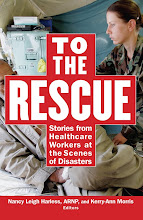
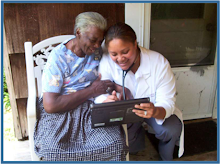












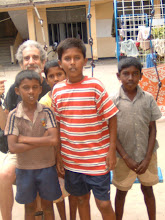














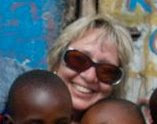


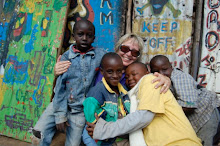






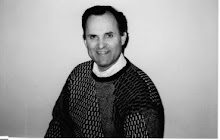






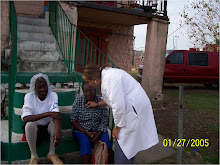






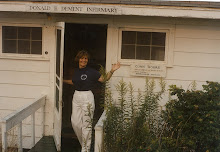




No comments:
Post a Comment